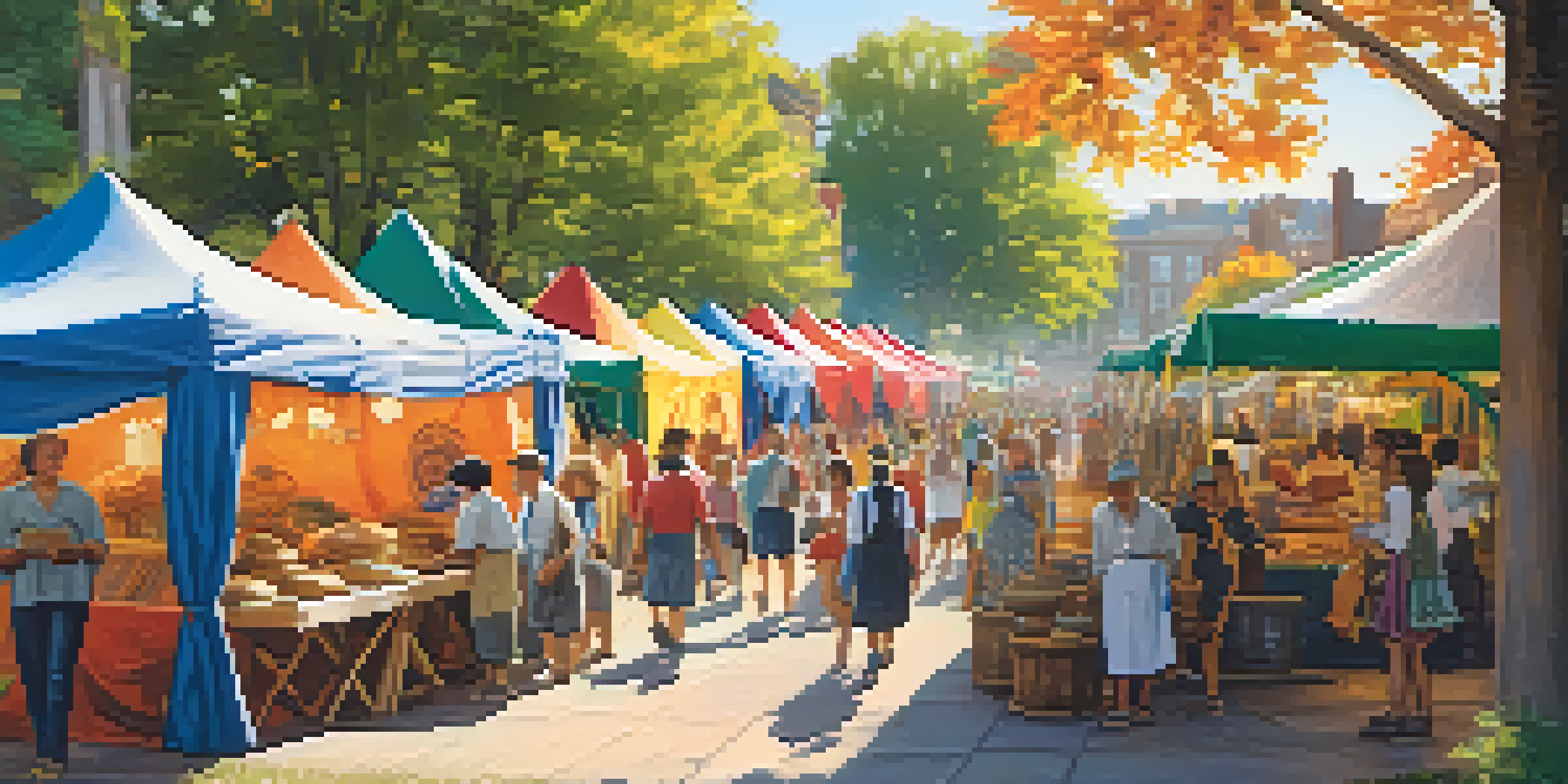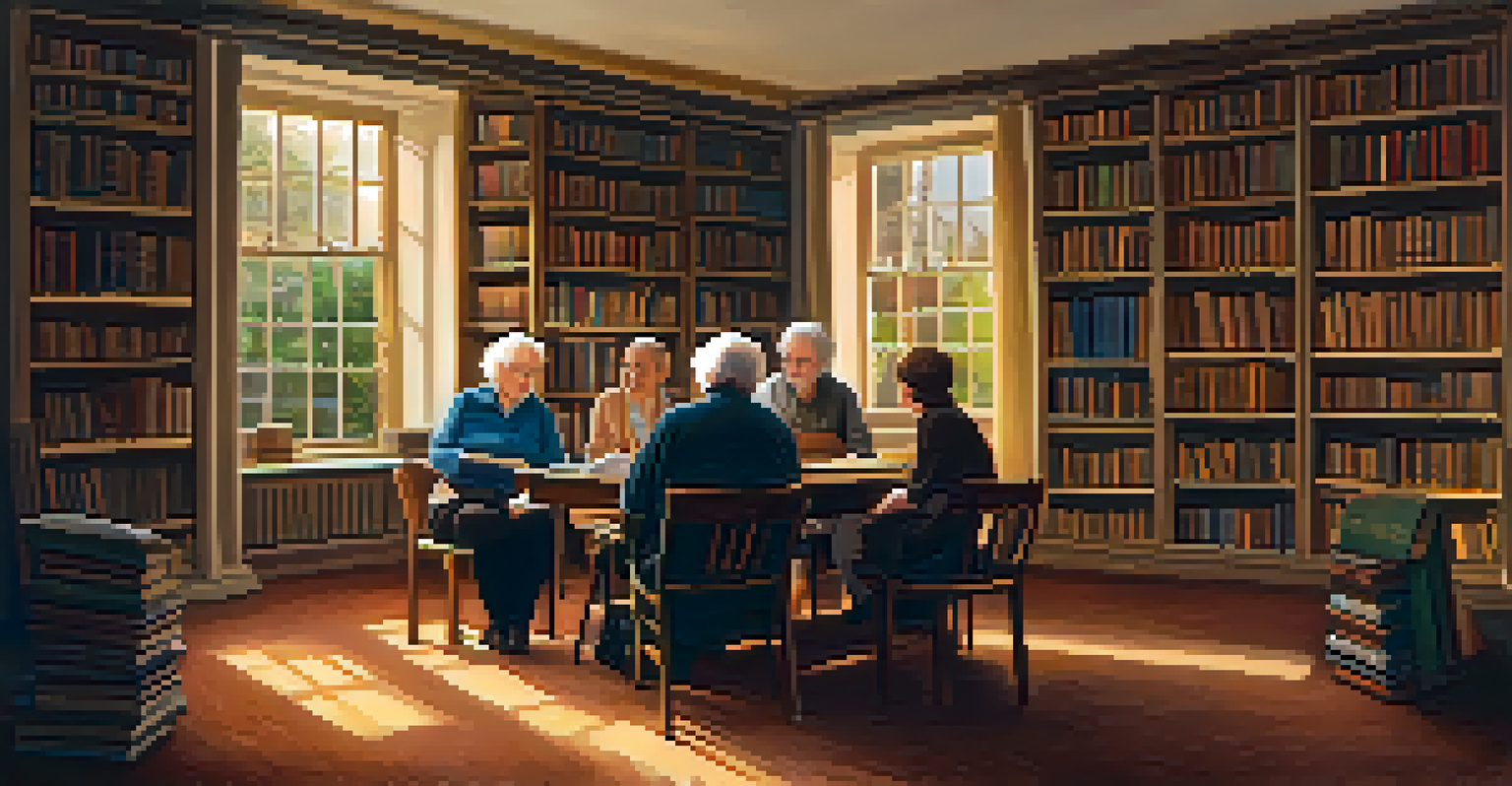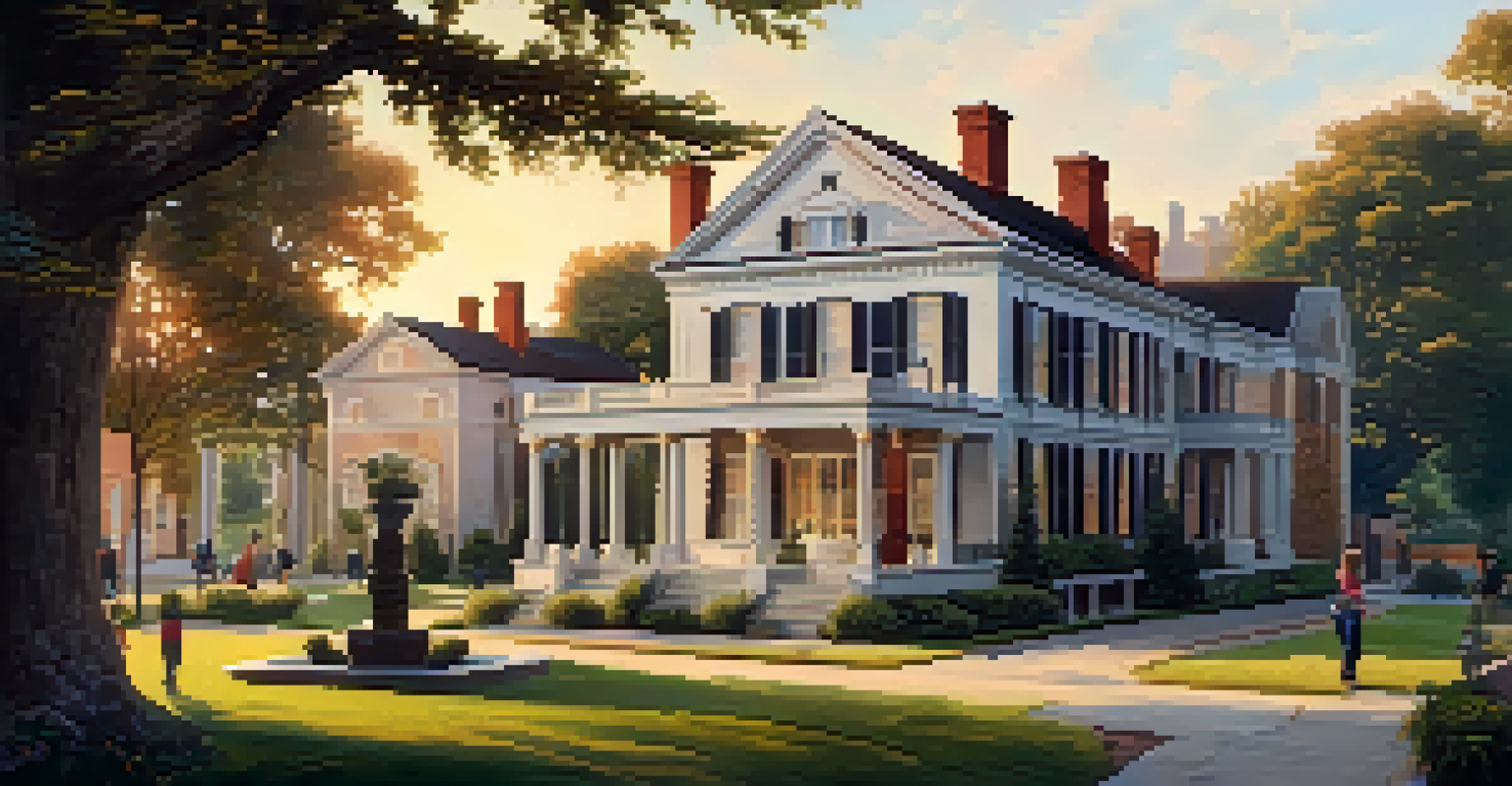Exploring the Role of Historical Societies in Community Identity

Understanding Historical Societies and Their Purpose
Historical societies are organizations dedicated to preserving local history, artifacts, and culture. They often serve as custodians of a community's past, collecting stories, documents, and items that reflect the unique identity of the area. By maintaining these resources, they provide residents with a tangible connection to their heritage, fostering a sense of belonging.
History is not a burden on the memory but an illumination of the soul.
These societies often engage in educational programs, workshops, and events that help individuals learn about their local history. For instance, they might organize lectures featuring local historians or host reenactments of significant events. Such activities not only attract interest but also encourage community participation and pride in shared history.
In essence, historical societies play a vital role in ensuring that the past is not forgotten. By celebrating local achievements and acknowledging historical challenges, they create a well-rounded narrative that can unify a community. This foundation of knowledge helps shape a distinct community identity, linking generations through shared experiences and values.
The Role of Historical Societies in Community Engagement
Engagement is a key function of historical societies, as they actively involve community members in their activities. This can include everything from volunteering for preservation projects to participating in local history fairs. By encouraging local involvement, societies foster a sense of ownership and responsibility towards community heritage.

Moreover, these organizations often collaborate with schools to integrate local history into educational curricula. This partnership not only enriches students' learning experiences but also cultivates a new generation of history enthusiasts. When young people are involved, they develop a deeper appreciation for their roots, which can strengthen community ties.
Historical Societies Preserve Heritage
These organizations safeguard local artifacts and stories, ensuring that community history is preserved for future generations.
Through various outreach programs, historical societies also aim to reach diverse populations within the community. By making history accessible to everyone, they ensure that multiple perspectives are represented. This inclusivity not only enhances the narrative but also fosters a communal identity that values every member’s contribution.
Preserving Local Heritage through Historical Societies
One of the primary functions of historical societies is preserving local heritage. This involves safeguarding artifacts, documents, and stories that define a community's history. For example, societies may create archives or museums where these items can be displayed and appreciated by the public, ensuring that the past is always present.
To know where you are going, you must first know where you have been.
Additionally, these organizations often engage in restoration projects that breathe new life into historic buildings or sites. By restoring these places, they not only preserve physical history but also keep the community’s narrative alive. This becomes a focal point for gatherings and events, reinforcing community bonds.
Furthermore, preservation efforts can boost local tourism, attracting visitors interested in learning about the area’s unique history. This economic benefit can lead to increased funding for further preservation initiatives, creating a positive feedback loop that enhances community identity and pride.
Historical Societies as Educational Resources
Historical societies serve as invaluable educational resources for communities, offering a wealth of knowledge about local history. They provide workshops, lectures, and guided tours that help residents and visitors alike understand the historical significance of their surroundings. This educational role reinforces the idea that history is not just about the past; it shapes our present and future.
In addition to traditional educational formats, many societies are leveraging technology to reach wider audiences. Online archives, virtual exhibits, and social media campaigns make local history more accessible than ever. This digital engagement can spark interest in younger generations, ensuring that the community’s heritage continues to be valued.
Community Engagement is Essential
By involving residents in activities and educational programs, historical societies foster a strong sense of belonging and collective identity.
By fostering a culture of learning, historical societies create informed citizens who appreciate their community's unique story. This awareness can lead to greater civic involvement and a commitment to preserving that narrative for future generations. Education thus becomes a cornerstone of community identity, rooted in a deep understanding of local history.
Fostering Community Pride through Historical Awareness
One of the most significant impacts of historical societies is their ability to foster community pride. By celebrating local achievements and recognizing historical figures, these organizations help residents connect with their past in meaningful ways. This pride can translate into a stronger sense of belonging and community unity.
Community events, such as heritage festivals or historic home tours, organized by historical societies create opportunities for residents to come together. These gatherings allow individuals to share their own stories and experiences, further enriching the community identity. The collective acknowledgment of shared history amplifies feelings of pride and belonging.
Moreover, when individuals feel proud of their community’s history, they are more likely to advocate for its preservation and improvement. This can lead to increased volunteerism and support for local initiatives, creating a vibrant, involved community. Ultimately, historical societies help cultivate a spirit of pride that resonates through generations.
Building Intergenerational Connections through History
Historical societies bridge generational gaps by connecting individuals through shared narratives. Many societies encourage storytelling, where older community members share their experiences with younger generations. This exchange not only preserves valuable history but also strengthens relationships between age groups.
Engaging younger generations in historical events, like reenactments or research projects, allows them to discover their roots. These activities provide a hands-on approach to learning about history, making it more relatable and engaging. As young people uncover the stories of their community, they also develop a deeper appreciation for their heritage.
Promoting Inclusivity in History
Historical societies strive to represent diverse voices in their narratives, enriching the community's understanding of its unique history.
As a result, historical societies help create a sense of continuity, where the lessons of the past inform the aspirations of the future. By fostering these intergenerational connections, they ensure that community identity remains vibrant and dynamic, adapting while still honoring its history.
The Future of Historical Societies in Community Identity
As society evolves, so too must historical societies adapt to meet the changing needs of their communities. This includes embracing new technologies and innovative approaches to storytelling. By integrating digital tools, historical societies can engage a broader audience, ensuring that the past is accessible and relevant to all.
Furthermore, societies must continue to prioritize inclusivity, ensuring that diverse voices are represented in their narratives. By acknowledging and celebrating the rich tapestry of experiences within a community, they can create a more comprehensive understanding of local history. This inclusivity will help strengthen community identity as it reflects the contributions of all members.

Ultimately, the future of historical societies lies in their ability to remain relevant and responsive to community needs. By fostering engagement, promoting education, and preserving heritage, they will continue to play a crucial role in shaping and enriching community identity for years to come.